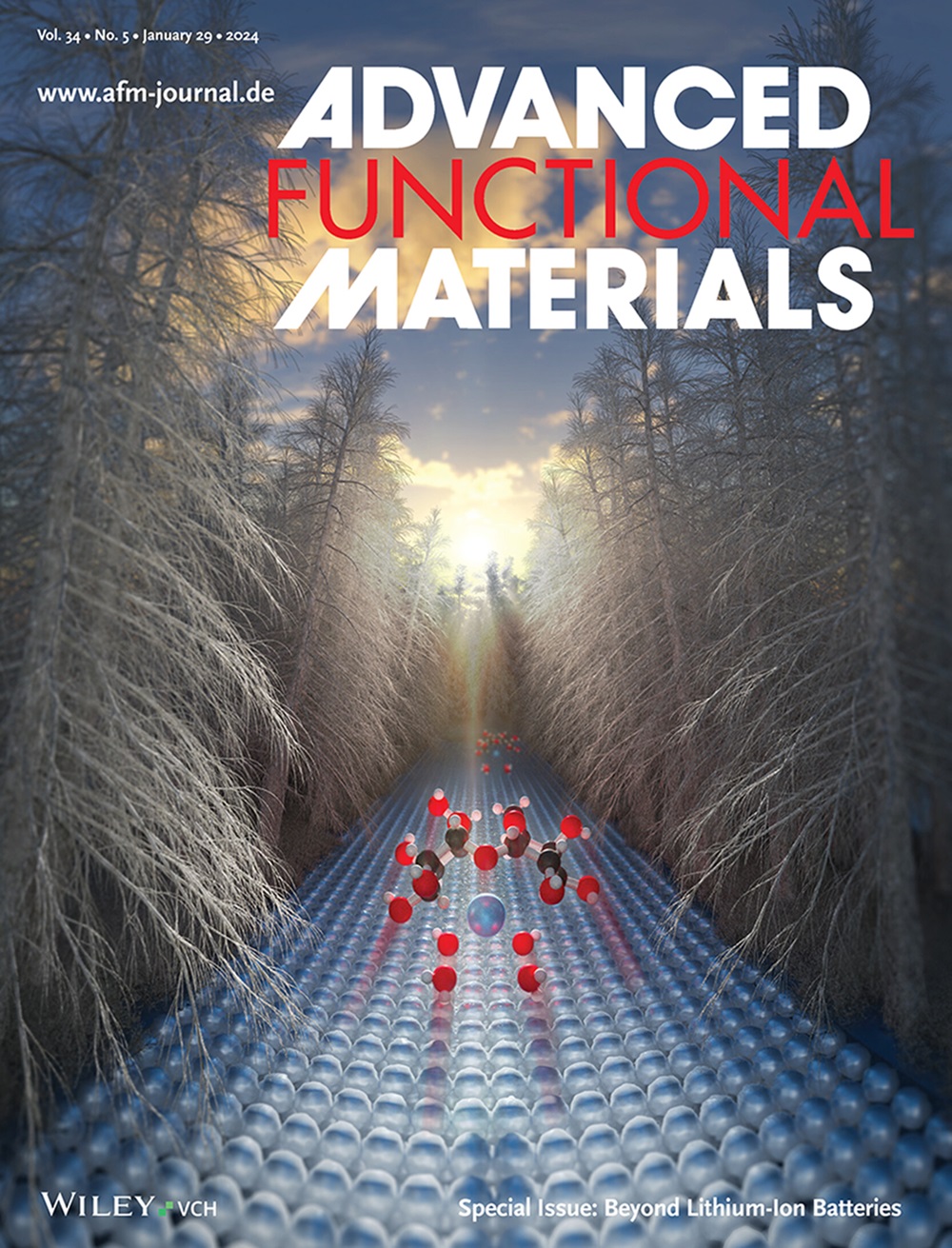Deciphering the Maze of Monomer Concentrations for Customizing Ion-sieving Performance of Polyamide Membranes
IF 19
1区 材料科学
Q1 CHEMISTRY, MULTIDISCIPLINARY
引用次数: 0
Abstract
Devising polyamide membranes with favorable pore size and surface charge is highly promising for boosting their ion-sieving performance. Despite tremendous achievements, existing polyamide membranes suffer from limited pore size tunability and highly negative charges due to a haphazard or nonoptimized choice of monomer concentrations, significantly locking their ion-sieving potential, especially for different ion species. Here, a straightforward strategy is proposed to synthesize a series of highly selective polyamide membranes with customized ion-sieving performance through deciphering the maze of monomer concentrations and ratios to engineer pore size and charge density and systematically elucidating the impact of structure on performance. Beyond conventional concentration ranges, individual increases of either acyl chloride or amine monomer concentration can be harnessed to produce carboxy-rich or amino-rich polyamide membranes with enhanced charge group density, demonstrating improved selectivity for mono/divalent anions or cations, respectively. Notably, the simultaneous elevation of both monomer concentrations yields polyamide membranes with the highest amide bond density and smallest pore size, achieving ultrahigh selectivity above 100 for both ion types. Moreover, the optimal polyamide membranes demonstrate superior and durable Li+/Mg2+ selectivity ranging from 79 to 366 toward simulated salt-lake brines across varying salinities, Li+/Mg2+ ratios, and operating pressures.

破解单体浓度迷宫,定制聚酰胺膜的离子筛选性能
设计具有良好孔径和表面电荷的聚酰胺膜是提高其离子筛分性能的重要途径。尽管取得了巨大的成就,但由于单体浓度的随意或非优化选择,现有的聚酰胺膜存在孔径可调性有限和高负电荷的问题,严重限制了它们的离子筛选潜力,特别是对不同种类的离子。本文提出了一种简单的策略,通过破解单体浓度和比例的迷宫,来设计孔径和电荷密度,并系统地阐明结构对性能的影响,合成一系列具有定制离子筛选性能的高选择性聚酰胺膜。在常规浓度范围之外,酰基氯或胺单体浓度的个别增加可以用来生产富羧基或富氨基的聚酰胺膜,其电荷基密度增强,分别证明了对单/二价阴离子或阳离子的选择性提高。值得注意的是,同时提高这两种单体浓度,聚酰胺膜具有最高的酰胺键密度和最小的孔径,对两种离子类型都实现了100以上的超高选择性。此外,在不同盐度、Li+/Mg2+比例和操作压力下,最佳聚酰胺膜对模拟盐湖盐水的Li+/Mg2+选择性在79 ~ 366之间。
本文章由计算机程序翻译,如有差异,请以英文原文为准。
求助全文
约1分钟内获得全文
求助全文
来源期刊

Advanced Functional Materials
工程技术-材料科学:综合
CiteScore
29.50
自引率
4.20%
发文量
2086
审稿时长
2.1 months
期刊介绍:
Firmly established as a top-tier materials science journal, Advanced Functional Materials reports breakthrough research in all aspects of materials science, including nanotechnology, chemistry, physics, and biology every week.
Advanced Functional Materials is known for its rapid and fair peer review, quality content, and high impact, making it the first choice of the international materials science community.
 求助内容:
求助内容: 应助结果提醒方式:
应助结果提醒方式:


